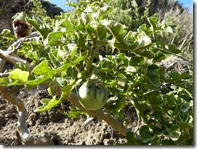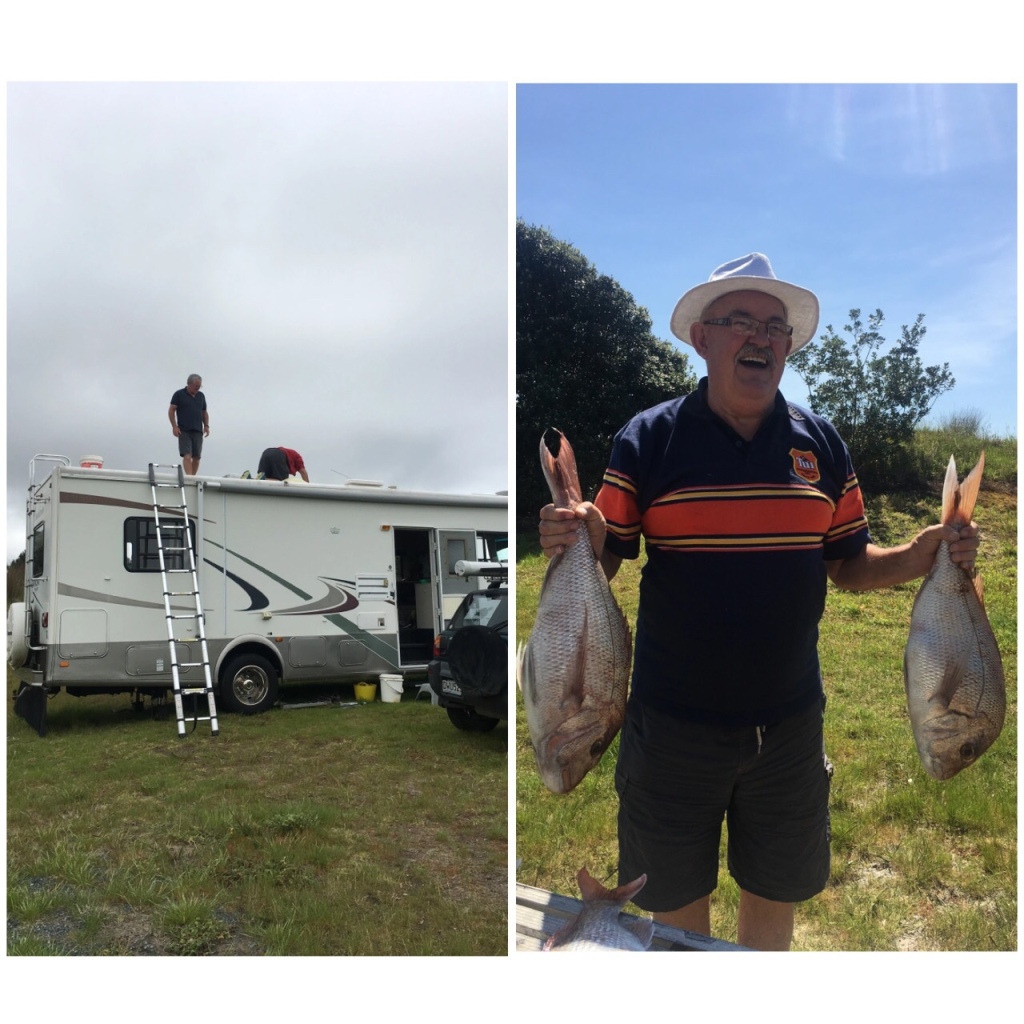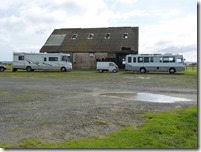Well it is well past time that I caught up with the growing number of photos that should have been published over the past two or three months.
So here goes, these have all been taken as we did our round trip from Kaitaia to Cape Reinga and return.
Last picture from Maitai Bay. There is this rock where the gulls gather every day to await the fish that they hope will come into the Bay. I think they have had a lean time fishing just as we have. They had not moved for the past three days!!

Finally we are sent on our way by a large rainbow stretching from one side of the Bay to the other.

Not withstanding the closeness of the it was agreed that a cold beer would be a better bet.

We made a bee-line from Kaitaia to Tapotupotu or Taputaputa (whichever you prefer). This is probably the best DOC Camp that we have encountered in our travels. In almost all respects it is a great place to stay. Lovely beach, water toilets, fishing (although we couldn’t catch a cold).
We were greeted by a guard of honour when we arrived. They may have thought we would feed them but they were very much mistaken.

Ever hopeful!!!! But as usual the return was empty handed. One day it will happen.

Of course one can always find a few drops of good cheer to end the day

One day we took the opportunity to again visit the cape Reinga lighthouse. The last time we were here it was blowing a gale but this time we decided to go late in the afternoon, early evening, to see the sunset at the same time
Supporting the lighthouse




The pohutukawa at the right is the final point of departure for the soul. Gliding down into the water from its branches

On our way back to the car we spotted these Brown Quail foraging alongside the track to the lighthouse.


And then we waited at the carpark to observe the sunset, which was a sight to behold.


Looking out into the bay one day this hovercraft appeared on the horizon, but later resolved itself into cruise liner

We had seen a peculiar plant alongside the road into Taputaputa with a bright yellow fruit. We picked some fruit and carefully plucked some leaves.


The fruit, when cut open were completely packed with seeds. Bright yellow on the outside, they have lighter yellow seeds and a green gelatinous packing.

The leaves are a real trap for any one. There are thorns/prickles on the stem and on the back of the leaf stems. The upper surface of the leaves also has thorns so that it is almost impossible to pick a leaf without being spiked.

The photo below gives away the family to which this plant belongs. It is a member of the Solanum family which contains the Tomato and Potato. We finally found out that it is Sodom’s Apple. Apparently quite poisonous, which probably accounts for it’s bitter taste which Sue reported.


Another aspect of moving around is the variety of species of birds that one comes across. Part of this is the fact we spend more time outside and therefore see and hear more of the animal and avian population around us and of course the species numbers vary substantially around the country. The fellow below looks very much like a variegated sparrow but in fact it is a Pipit which are very common up this way. They are often seen in the same areas as sparrows as they seem to feed on the same types seeds and insects.

Another common sight is the Yellow Hammer or Yellow Head, again common up here, and again often found in the same areas as Sparrows.


We also took time out to visit the giant sand dunes at Te Paki. At first sight they just appear to be just large monotonous hills of sand with a lot of tourists sand boarding down them.


However as one moves further into the dunes they are full of interesting sights. The sand itself is obviously soft in large parts, but it is also very compacted in others. This leads to areas where the softer sand has been blown away from the hard compacted sand leaving ridges and domes of hard sand on its way to becoming stone.



Also there are patches of shell that have been worn out of the sand. These are often collected into relatively small areas. It would be interesting to know the age of some of this material.


The photo on the right shows a large variety of shells, the most interesting is the snail like shell in the centre. It is loosely wound with a hole into its centre.


The other sight which is quite unique are the fields of stones. The stones vary in size from two to three cms up to 10 to 20 cms. They have obviously been buried at random depths but as the sand has been blown away they have fallen down onto the hard pan in a random pattern. These stone fields can be quite expansive in some areas




The two photos below show the edges of a hard dome that has been worn through leaving the interior area exposed to wind and rain which has weathered it away.


This is Sue and Pat on there way up one of the larger dunes used by the sand boarders, with Pat taking photos from the top


And Sue shows how soft and difficult it is make progress.


And here is a clue as to how the hard pan is formed. The dark area has been wet recently and has set into a hard crust. By the time this has occurred a number of times a thick layer will form which will get harder and heavier so that it will compact


And this one is most unusual as it appears to have been formed as a circular or ball shaped concretion, perhaps similar to a Moeraki Boulder

Well that’s the end of this catch up. Some more to come before we are up to date.
















































































































![27parking_thumb[2] 27parking_thumb[2]](https://brvannini.wordpress.com/wp-content/uploads/2013/08/27parking_thumb2.jpg)
![26parking_thumb[1] 26parking_thumb[1]](https://brvannini.wordpress.com/wp-content/uploads/2013/08/26parking_thumb1.jpg)
![23Mural_thumb[2] 23Mural_thumb[2]](https://brvannini.wordpress.com/wp-content/uploads/2013/08/23mural_thumb2.jpg)











